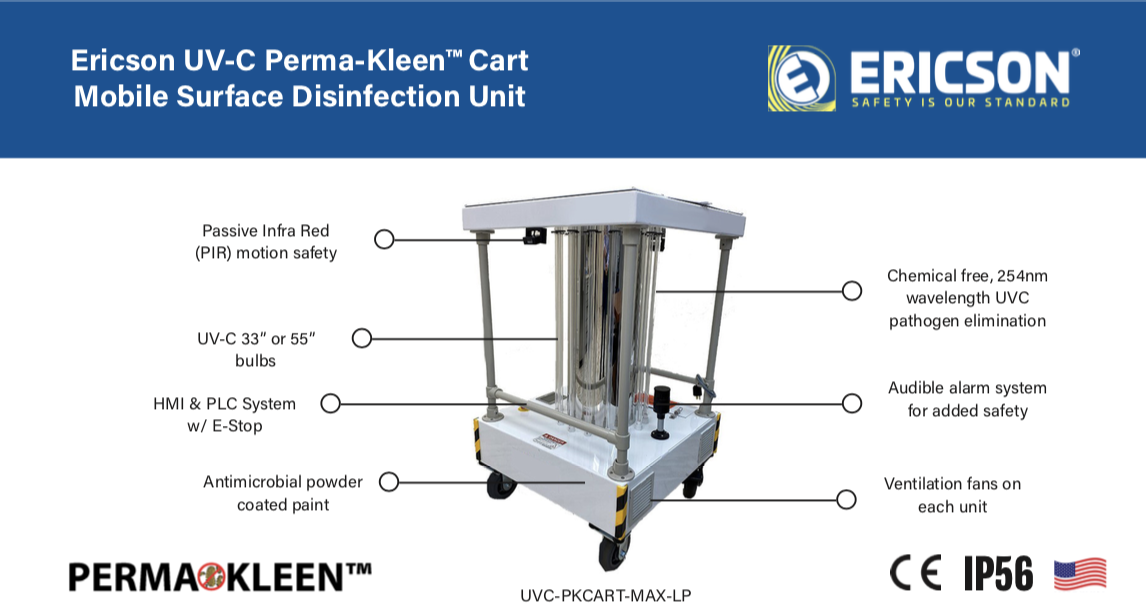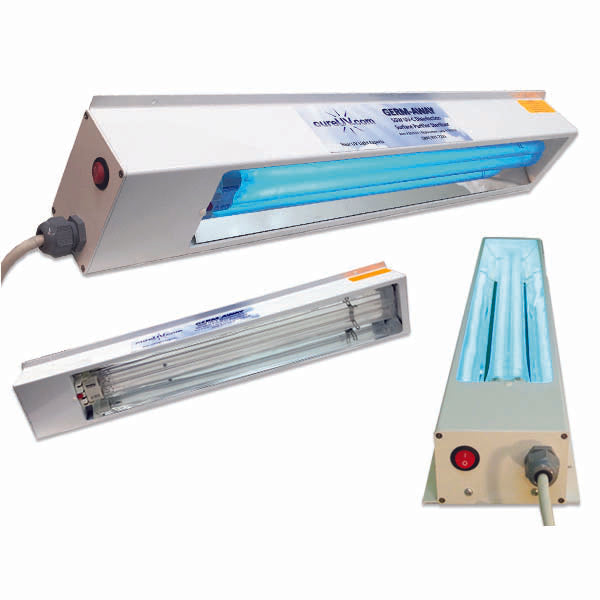Using the Possible of UV Sanitation: Shielding Health And Wellness and Hygiene
As the globe grapples with the recurring pandemic and the constant threat of infectious diseases, the importance of keeping health and wellness and health has actually never ever been extra evident. In this context, using the possibility of UV sanitation becomes an appealing remedy. UV sanitation, a modern technology commonly utilized in different markets, has actually confirmed efficient in getting rid of hazardous virus. There is a lot even more to explore behind the scientific research of UV disinfection and its applications. From recognizing the mechanisms at play to implementing this modern technology in our every day lives, this conversation aims to lose light on the possibility of UV disinfection and its role in protecting our health and wellness and hygiene.
Understanding UV Sanitation
UV disinfection is an extremely effective and commonly utilized technique for eliminating hazardous virus and making certain health and hygiene. This method utilizes ultraviolet (UV) light to inactivate microorganisms by harming their DNA and avoiding them from duplicating. UV disinfection is particularly efficient versus germs, viruses, and other bacteria that can cause infections and diseases.
The principle behind UV sanitation is easy yet powerful. When UV light is emitted at a particular wavelength, it penetrates the microbe's cell wall and disrupts its genetic material. This process, referred to as photodissociation, results in the formation of thymine dimers, which stop the bacterium from replicating and providing it safe. UV disinfection can be used in various setups, including water treatment plants, medical care facilities, food processing industries, and air purification systems.
Among the advantages of UV sanitation is its ability to efficiently and successfully remove a vast array of microorganisms without the demand for chemicals or additives. Unlike other disinfection techniques, such as chlorine or ozone, UV sanitation does not introduce hazardous byproducts or chemical residues right into the setting. Furthermore, UV sanitation is a non-contact process, which means that it does not need physical call with the microbes, decreasing the danger of cross-contamination.

The Scientific Research Behind UV Disinfection
The efficiency of UV sanitation lies in its capability to interrupt the hereditary product of microbes, rendering them incapable to replicate and consequently eliminating their harmful capacity. UV, or ultraviolet, radiation is a type of electro-magnetic radiation with wavelengths much shorter than visible light. It is categorized into 3 kinds: UV-C, uv-b, and uv-. UV-C radiation, especially, has the fastest wavelength and the greatest power. Since it can pass through the cell walls of bacteria and damage their DNA or RNA., this high-energy UV-C radiation is most efficient in disinfection applications.
When microorganisms are exposed to UV-C radiation, the energy is absorbed by their genetic product, triggering bonds to damage and developing chain reactions that interrupt their ability to replicate. This prevents the microbes from duplicating and spreading out infection. UV sanitation is particularly effective against infections, fungi, and bacteria, consisting of common virus such as Escherichia coli, Salmonella, and Influenza.
The scientific research behind UV disinfection is sustained by considerable research and research studies. It has actually been shown that direct exposure to an adequate dosage of UV-C radiation can achieve a high level of disinfection, commonly surpassing 99.9% efficiency in killing bacteria. It is essential to keep in mind that the performance of UV sanitation depends on different factors, including the strength of UV-C radiation, exposure time, range from the UV source, and the sensitivity of the microorganism to UV radiation (uv surface disinfection).
Applications of UV Sanitation
Provided the substantial study and efficiency of UV sanitation in disrupting the hereditary product of microorganisms, it is vital to discover the different practical applications of this innovation. UV disinfection has confirmed to be a beneficial tool in a large range of industries where maintaining a secure and tidy atmosphere is vital.
One major application of UV disinfection remains in healthcare setups. UV light can be made use of to check my reference sanitize surfaces, tools, and also the air in healthcare facilities and clinical centers. This assists to decrease the risk of healthcare-associated infections and makes certain a more secure atmosphere for people and health care employees.
One more crucial application is in the food and drink sector. UV sanitation is used to deal with water and remove dangerous virus, such as E. coli and Salmonella, from the manufacturing procedure. uv surface disinfection. This guarantees the safety and quality of the products we eat
UV disinfection is likewise extensively utilized in water therapy plants and wastewater treatment centers. It is an efficient method for ruining damaging bacteria, viruses, and bloodsuckers that can be existing in water sources. This assists to give clean and secure drinking water to neighborhoods and secure the atmosphere from contamination.
Furthermore, UV disinfection is utilized in the pharmaceutical market to decontaminate devices and keep the stability of products. It is also made use of in labs and research study centers to avoid contamination and make certain exact results.
Advantages of UV Sanitation Modern Technology
One notable benefit of using UV disinfection innovation is its ability to successfully eradicate microbes without the use of extreme chemicals. This is specifically helpful in numerous settings, such as health care centers, water therapy plants, and food processing sectors, where the existence of harmful pathogens positions a substantial risk to public health and safety and security.
Unlike traditional sanitation approaches that count on chemicals like chlorine or ozone, UV disinfection technology utilizes ultraviolet light to additional resources target and damage the DNA of microorganisms, successfully neutralizing their capability to reproduce and create infections. This process not just removes the requirement for potentially dangerous chemicals however additionally decreases the danger of chemical residue or results staying in the treated environment.

Moreover, UV sanitation technology is eco friendly. As it does not count on using chemicals, it eliminates the requirement for their disposal, transportation, and production, decreasing the general carbon impact related to disinfection processes. Furthermore, UV sanitation systems have a longer lifespan compared to chemical-based methods, leading to less frequent replacement and further minimizing waste.
Executing UV Sanitation in Life
To successfully carry out UV disinfection in life, people and organizations can integrate portable UV disinfecting devices right into their hygiene routines and cleansing techniques. These tools are designed to emit ultraviolet light, which has been verified to kill or suspend a large range of microorganisms, consisting of bacteria, fungis, and infections. By using mobile UV sanitizing tools, individuals can sanitize commonly touched objects and surfaces, such as mobile phone, laptop computers, tricks, and doorknobs, reducing the threat of spreading bacteria and infections.
Along with incorporating portable UV sterilizing tools, it is essential to comply with appropriate guidelines and referrals for efficient UV sanitation. This consists of ensuring that the device is used correctly and for the advised period to attain optimal disinfection outcomes. It is likewise vital to prioritize safety procedures, such as putting on protective eyeglasses and staying clear of direct exposure of the UV light to the skin.

Furthermore, companies can apply UV sanitation innovation in different settings to boost hygiene practices. Hospitals and medical care centers can utilize UV sanitation robots to disinfect person spaces, running movie theaters, and other high-touch locations. Food processing sectors can incorporate UV sanitation systems into their production lines to improve food security and prevent contamination.
Verdict
In conclusion, UV sanitation innovation holds excellent potential in guarding health and hygiene. With its many advantages, UV sanitation is a valuable tool for keeping a healthy and balanced and tidy environment.
Unlike various other sanitation approaches, such as chlorine or ozone, UV disinfection does not introduce damaging by-products or chemical residues right into you could check here the setting. It is important to note that the efficiency of UV sanitation depends on numerous factors, including the intensity of UV-C radiation, exposure time, range from the UV source, and the vulnerability of the bacterium to UV radiation.
One more advantage of UV disinfection innovation is its capability to give quick and continual sanitation. Unlike guidebook cleansing approaches, which can be time-consuming and require significant labor, UV disinfection systems can be automated and run continuously, guaranteeing constant disinfection without human intervention.To effectively execute UV disinfection in daily life, individuals and organizations can include mobile UV disinfecting gadgets right into their health regimens and cleansing practices.